Your skin is like your personality – it is individual to you.
But, for every man and woman, the skin acts as a protective guard against “mechanical damage, microbial invasion, and radiation or UV light, as a barrier between the internal part of the body and the external environment.” (https://www.ncbi.nlm.nih.gov/pmc/articles/PMC2895702/)
Yes, skin type is largely genetic, but there are commonalities.
Everyone produces some form of oil on their skin, but how much and where it builds up, is unique to each person. Some may find their nose gets oily, but the rest of their face is dry.
Others may notice their skin never feels hydrated, no matter how much cream they apply.
These are all clues to detecting your skin type.
What Are The Different Skin Types?

Pigmented skin, mature skin, blemished skin – consumers face a plethora of labels, and skin categories that can be confusing.
Once you become familiar with your skin and understand under what skin type category it falls, you can make an educated strategy to care for it.
Dr.Azadeh Shirazi, better known as Dr. Azi on YouTube, breaks down the different skin types according to the American Academy of Dermatology Association (AADA) and the Fitzpatrick Scale.
In her video (https://www.youtube.com/watch?v=RPiovfN2ZMM), How to Know Your Skin Type, Dr. Shirazi says dermatologists think of skin type in terms of how it reacts to the sun.
Do you tan in the sun? This is the basis for the Fitzpatrick Scale which measures levels of natural melanin in the skin and how well it absorbs UV damage.
The scale ranges from Type 1 with very little melanin and burning easily in the sun, up to Type 6 which rarely burns and tans easily.
But science can seem like more of an obstacle for consumers who just simply want to know what to buy to make their skin better.
Dr. Shirazi says AADAhas simplified the system somewhat, defining five different skin types. The categories are built on the natural state of the skin. How much water content does it have? How oily is it? What level of sensitivity does it have?
1. Normal skin
If you have normal skin, then you likely aren’t experiencing any confusing issues or problems. It’s not oily and it’s not dry. You have balanced sebum production and you don’t need a lot of products to enjoy good skin days.
The skin will appear to have smaller pores due to less sebum production. Normal skin also tends to have good blood circulation and less of an issue with acne or pimples.
2. Oily skin
Oily skin, aka, Seborrhea, is shiny and feels slick. Your pores will also appear larger because they become filled with sebum. It means your oil glands are producing excess oil.
The sebum, which is rich in fatty acids, triglycerides, and squalene, protects the skin and prevents water loss.
Many people believe this means the skin is hydrated, but it has no association with water levels. You can be dehydrated and still have oily skin, according to Dr. Shirazi. This skin type is prone to acne breakouts. Oily skin is common among ethnic people.
3. Dry skin
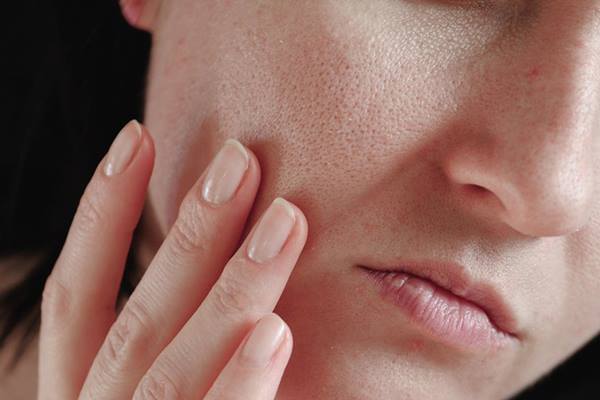
Also known as Xerosis, you tend to feel tightness in your skin because the oil glands are not producing as much oil. It looks dull and rough to the touch.
Dehydrated skin is lacking water or hydration. Dry skin is determined by its flaky and rough texture. It can at times feel tight and irritating.
4. Combination skin
Combination skin is just as it sounds; a mix of oily and dry skin. No worries – you are in the popular club. This is the most common skin type according to dermatology studies.
Typically, this skin type is oily in the T-zone, meaning the nose, forehead, and chin areas, while being dry in the cheek region.
5. Sensitive skin
Your skin reacts fast to anything you put on it when you have sensitive skin. You likely experience flushing when you eat spicy food and adverse reactions to new products or products that contain fragrance.
Sensitive skins normally have a lot of redness and random itchiness when it is free of makeup or other products.
Not only do certain formulations cause sensitive skin, but extreme temperatures and even the sun can irritate.
You may not fall into one exclusive category here as you have a unique skin type personal to you only. There are different spectrums within each category.
For example, you may be extremely dry-skinned or a mix of combination and oily. Plus, your skin is likely to change depending on the weather and location as well as age.
How To Determine Your Skin Type
First, wash your face with a gentle cleanser. Dr. Shirazi says in her video, that you then need to wait – don’t apply anything to the skin for at least an hour.
Next, look in the mirror with the best lighting and stare at yourself. What does your skin look like? Is it dry? Is there oil on your nose, chin, or forehead? Are you itchy or flaky?
How To Identify Each Skin Type And Take Care Of Them
There are four elements of fundamental skin care according to Dr. Leslie Baumann of the Baumann Cosmetic and Research Institute.
- Mild cleansing
- Hydrating
- Replenishing
- Protecting
Use this short list as a guide to caring for your skin daily. Now, as you determine your skin type, each step will look different considering where your skin falls on the AADA scale and any skin conditions you may have.
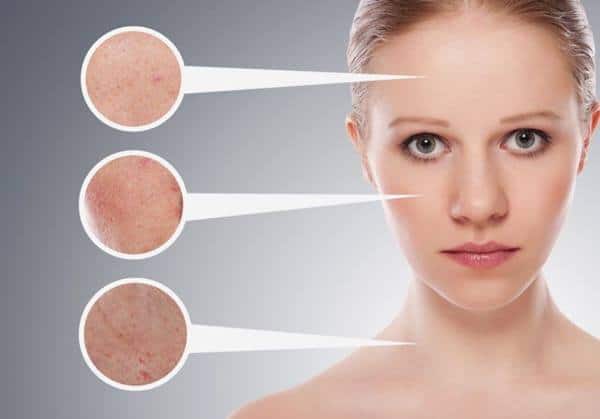
Normal Skin
Your skin will probably look balanced after cleansing. It won’t appear excessively oily and it won’t feel or look dry either.
But that does not mean you’re off the hook. Normal skin can still experience dryness or oiliness, depending on the season and your hormones.
Still, you require less product – a definite benefit of having normal skin. Once you find the right products that please you and feel good on your skin, you shouldn’t have any obstacles.
Dry Skin
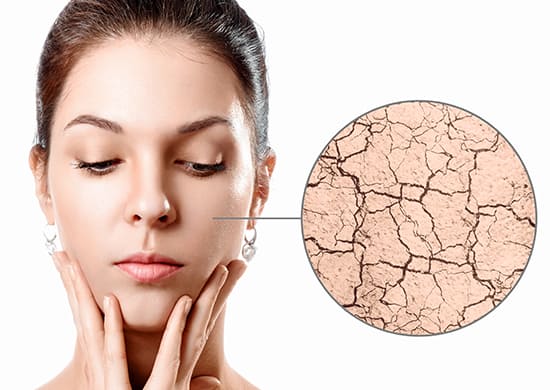
Dry skin types, characterized by rough, tight skin, do well with balms and creams. These products will form a coating on the skin preventing water loss. A heavier moisturizer or cream will mimic and enhance your natural oils.
Look for oil-based products as well as products containing fatty acids, ceramides, and cholesterol. They will be more protective and will not evaporate as easily from the skin.
Lay off the cleansers if this is your skin type. They will only strip your face of the oils you are already lacking. You will do well with a gentle or hydrating cleanser.
If it looks white or creamy, it’s perfect for your skin because it’s filled with moisturizers and oils as well as mild cleansing agents.
Also, long baths and hot showers are a no-no for this skin type. They will further dry out the skin.
Baumann writes in her study that dry skin will have an “impaired barrier” especially if it’s chronically exposed to the sun. So, she recommends a focus on repairing the skin and limiting time in the sun.
Sunscreen will be a critical step in your daily skincare process. Also, consider getting a humidifier for your house or bedroom to maintain a high-moisture environment.
You can add facial oils that have become popular lately but use them after your moisturizer, as they do not hydrate the skin on their own.
Oily Skin
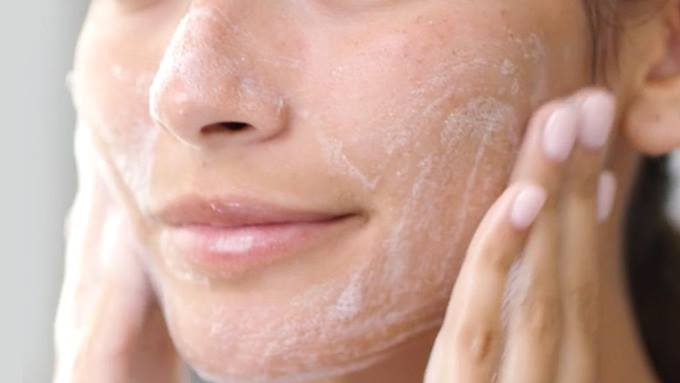
If you notice a high shine or a greasy appearance to your skin after the cleansing test, then you are probably an oily skin type. The oil will cover the entire face.
Use lighter-formulated products. Water-based or gel-based cleansers and moisturizers are ideal. Cleansing is important, but still, don’t over-cleanse which can stimulate sebum production – something you don’t need.
Dr. Baumann says that the treatment of oily skin should be focused on reducing sebum production through the use of retinoids. She also says skin bacteria should be reduced using antibiotics, benzoyl peroxide, or other antimicrobials.
She says oil or sebum production fluctuates with age. So, in your early years as a child, you will experience minimal oil on the skin.
Sebum production increases in the mid to late teen years then drops dramatically in the senior years.
Combination Skin
Are you noticing oil or shine on certain parts of the face and dry skin elsewhere? Typically, the T-zone will produce more sebum and the cheeks will be dry and rough.
That’s combination skin. Because you are dealing with two different skin types, you will need more products to manage them.
The oily T-zone will need lighter, water or gel-based products while the dry cheeks will usually require a heavier oil-based formulation.
Use a gel or water-based cleanser for the oily T-zone area. For the cheeks, try a cream or oil-based wash that does not strip the skin.
Or you can invest in some sheet masks targeted for the oily regions, then follow it up with a moisturizing mask made to fix dry skin.
Look for ‘balancing’ skin care because these products are developed to take care of disparities in the skin.
Sensitive skin
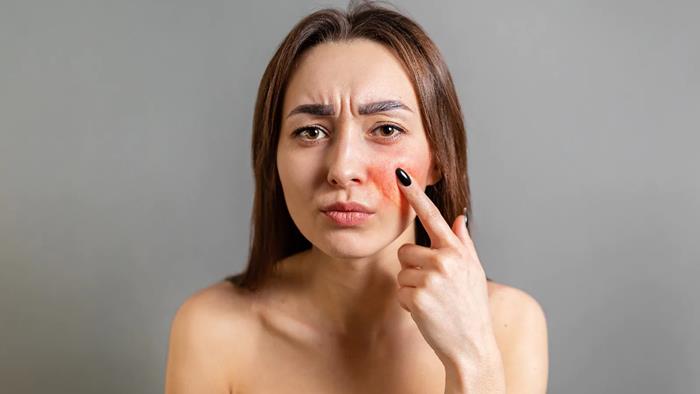
Let’s face it. It’s not fun having sensitive skin. If you’re someone whose skin reacts to new products, then you probably have it. You may feel red, inflamed, and bumpy after you test out that new moisturizer you picked up at the grocery store.
Dr. Baumann says sensitivity to products is not uncommon. She says “numerous studies have shown that approximately 10 percent of dermatologic patients who are patch tested for anywhere from 20 to 100 ingredients manifest allergic sensitivity to at least one ingredient common in cosmetic products.”
You will need to carefully select what moisturizers and cleansers you use, but the good news is you should need less product.
Once you have found that particular formulation that works well on your skin and does not cause irritation, stick with it and exclude others.
Dr. Shirazi says many people are born with sensitive skin, but it’s also important to note that sensitivities can be brought on by using too many kinds and variations of products on the skin.
Formulations with a lot of dyes or fragrances in them used frequently and in combination with other irritating products, can bring on skin allergies over prolonged exposure. Be aware of that and pair down your beauty products to a bare minimum.
The good news is the selection of sensitive skin care products available now is much greater than at any time in the beauty industry.
Companies are including antioxidants like Vitamins C and E, as well as Coenzyme Q10 and botanical sources like caffeine, grape seed extract, and green tea. It is much easier today to find a moisturizer or cleanser that will not cause a reaction in sensitized skin.
Finally
Once you’ve figured out what game your skin likes to play, it’s a breeze to find the cleansing and moisturizing formulations that will match. However, the traditional descriptions and categories of skin types are arguably too simple.
Researchers are still adding to these lists realizing the complexity of classifying specific skin factors. Aging skin or mature skin is another skin type that every person will eventually have to face and manage.
After the age of 25, you will begin to lose the collagen and elasticity in your skin. That will inevitably lead to fine lines and wrinkles along with the thinning of your skin and decreased sebum production.
This is when you will want to introduce anti-aging products into your skincare routines such as retinol, Vitamin C serums, and collagen boosters.
And don’t forget that sunscreen – it’s a must for all skin types because no one can fully hide from the sun’s UV rays.
